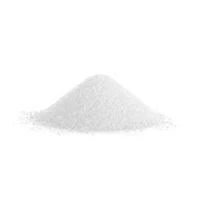
Exploring the Uses and Benefits of Chinese Monosodium Glutamate in Cooking
The Role of Monosodium Glutamate in Chinese Cuisine
Monosodium glutamate, commonly known as MSG, is a flavor enhancer that has become synonymous with Chinese cuisine. This white crystalline powder, recognized for its ability to amplify umami—the savory fifth taste—plays a pivotal role in enhancing the flavors of various dishes, making them more appetizing and satisfying.
The Role of Monosodium Glutamate in Chinese Cuisine
In Chinese cooking, MSG is often added to soups, stir-fries, and sauces. Its ability to enhance the taste of salty and savory dishes makes it a favorite among chefs. When used properly, MSG doesn’t overpower the dish; instead, it complements the existing flavors, resulting in a more rounded and delicious meal. For example, in a classic dish like Kung Pao chicken, the addition of MSG emphasizes the savory notes of soy sauce and the richness of the peanuts, creating a more delectable experience.
chinese monosodium glutamate

Despite its widespread use, MSG has faced scrutiny and controversy over the years. In the late 1960s, a letter published in the New England Journal of Medicine coined the term “Chinese Restaurant Syndrome,” describing a range of symptoms including headaches and nausea that individuals reported after consuming Chinese food. This sensationalism led to widespread misconceptions and fears regarding MSG. However, extensive scientific research has since debunked these claims. Studies conducted by various health organizations, including the Food and Drug Administration (FDA) and the World Health Organization (WHO), have concluded that MSG is generally recognized as safe when consumed in moderate amounts.
The negative perception of MSG within certain populations has encouraged many Chinese restaurants to either limit its use or eliminate it altogether. In an effort to appeal to health-conscious consumers, some chefs now focus on using fresh ingredients, herbs, and spices to enhance flavor. However, this shift does not negate the culinary significance of MSG, which remains a valuable tool for achieving depth and complexity in flavors, especially in traditional recipes.
In addition to its flavor-enhancing properties, MSG has also been associated with various nutritional benefits. It is low in calories and does not contribute fat or cholesterol, making it a convenient option for those looking to add flavor without unhealthy additives. Furthermore, because it is approximately one-third the sodium of table salt, it can be a practical alternative for enhancing flavor while minimizing sodium intake. This aspect can be particularly appealing in regions where hypertension and heart disease are prevalent.
In conclusion, monosodium glutamate holds a significant place in Chinese cuisine, enriching dishes with its umami flavor. While misconceptions about its safety persist, the scientific consensus supports its use as a safe and effective flavor enhancer. As culinary practices evolve, the debate around MSG continues, reflecting the tension between tradition and modern dietary trends. Whether for its unique taste-enhancing abilities or its nutritional benefits, MSG remains a pivotal ingredient in the rich landscape of Chinese cooking, cherished by many for the depth it brings to food.
-
Pure Sodium Dichloroisocyanurate Dihydrate | Powerful DisinfectantNewsAug.29,2025
-
Industrial Chemicals: Quality & Purity for Every IndustryNewsAug.28,2025
-
Nitrile Rubber Honoring Strict Production StandardsNewsAug.22,2025
-
Aspartame Ingredients Honoring Food Safety ValuesNewsAug.22,2025
-
Fertilizer for Balanced Plant NutritionNewsAug.22,2025
-
Cyanide Gold Processing with High Purity AdditivesNewsAug.22,2025
-
Formic Acid in Textile Dyeing ApplicationsNewsAug.22,2025
Hebei Tenger Chemical Technology Co., Ltd. focuses on the chemical industry and is committed to the export service of chemical raw materials.
-

view more DiethanolisopropanolamineIn the ever-growing field of chemical solutions, diethanolisopropanolamine (DEIPA) stands out as a versatile and important compound. Due to its unique chemical structure and properties, DEIPA is of interest to various industries including construction, personal care, and agriculture. -

view more TriisopropanolamineTriisopropanolamine (TIPA) alkanol amine substance, is a kind of alcohol amine compound with amino and alcohol hydroxyl, and because of its molecules contains both amino and hydroxyl. -

view more Tetramethyl Thiuram DisulfideTetramethyl thiuram disulfide, also known as TMTD, is a white to light-yellow powder with a distinct sulfur-like odor. It is soluble in organic solvents such as benzene, acetone, and ethyl acetate, making it highly versatile for use in different formulations. TMTD is known for its excellent vulcanization acceleration properties, which makes it a key ingredient in the production of rubber products. Additionally, it acts as an effective fungicide and bactericide, making it valuable in agricultural applications. Its high purity and stability ensure consistent performance, making it a preferred choice for manufacturers across various industries.





